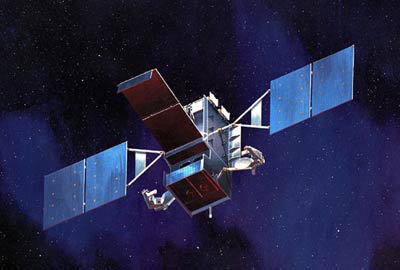India’s missile defense: changing the nature of the Indo-Pakistani conflictby Taylor Dinerman
|
| Even if they give missile defense a big budget and a high priority, it will be many years before India has a moderately effective, indigenous missile defense shield. |
At this moment, they are both right. The India-Pakistan nuclear stand-off is stalemated to Pakistan’s advantage, in that they can launch (or allow) terror attacks such as the November 2008 one on Mumbai and India can do essentially nothing in response. The unmistakable smugness of the former Pakistani diplomat made this evident. However, this situation will not last forever. India is now seeking way to neutralize the majority of Pakistan’s nuclear weapons and within a decade or perhaps a little longer they may come up with a solution.
In 2006 India began testing a missile defense version of its Prithvi medium-range ballistic missile. This test is just one sign that New Delhi is seeking to develop a multi-layer complex that can defend against Pakistan’s nuclear missiles. Due to its liquid-fueled first stage, the Prithvi Air Defense (PAD) is certainly not an ideal system, but it is both available and locally made. The Indian military is comfortable enough with this weapon’s effectiveness to make it their main battlefield ballistic missile for both conventional and nuclear applications.
Even if they give missile defense a big budget and a high priority, it will be many years before India has a moderately effective, indigenous missile defense shield. The claim last year by the head of the Defense Research and Development Organization (DRDO) that they will have a multi-layered system ready in 2010 is taken with a grain of salt by observers both inside and outside the subcontinent. However, unless the geopolitical situation radically changes, there is no doubt that India will continue work on the systems for the foreseeable future.
If they wanted to they could buy systems from the US, Israel, or Russia, and they have already bought themselves a pair of Israeli Green Pine radars originally designed for the Arrow ABM system. If they were ready to spend the money they could combine, for example, the US PAC 3 version of the Patriot with the Israeli Arrow and have an effective but limited defense system within a fairly short timeframe. While the US may have blocked India from buying the Israeli system in the past, this no longer would be the case.
What is more likely, though, is that they will continue to build up their own technology while procuring a few items from overseas and entering into collaborative development programs with carefully selected foreign firms. The hard part may not be the interceptors themselves but building up the network of sensors and command and control systems needed to make the whole thing credible.
One requirement will be for some sort of space based early warning system to supplement the powerful long-range radars they will have to deploy both in the air and in the western Himalaya mountains. India is lucky in that it does have a few good places where it could place radars that, if they were powerful enough, could cover most of the possible launch sites. But they will still need satellites to cover the whole of Pakistan and to provide a secure and unambiguous warning of a launch event.
India could, if they wanted to, gain access to the US DSP (Defense Support Program) and SBIRS (Space Based Infra Red System) information the same way that NATO, Israel, Japan, and South Korea all have this data available to one degree or another. However, given the history of the subcontinent, and the shaky basis on which the new US-India relationship rests, the government may not be willing to put its trust in Washington’s goodwill.
They may choose to build their own heat detecting satellites. The IRS (Indian Remote Sensing) and Cartosat series of remote sensing spacecraft have given India some of the expertise required to build an equivalent of the DSP. Such a system does not have to be as heavy or as sophisticated as the US one; it could, in fact, consist of a larger number of small satellites in low Earth orbit. This would certainly be expensive by Indian standards and would take at least as long to develop and deploy as the indigenous interceptor missiles themselves.
| India could, if they wanted to, gain access to the US DSP and SBIRS information, but given the history of the subcontinent, and the shaky basis on which the new US-India relationship rests, the government may not be willing to put its trust in Washington’s goodwill. |
Another factor that will add to the expense of this project is the fact that India is a big country and will need a fairly large number of long-range and short-range BMD missiles. The better that they can do in the boost phase the better off they will be, but there are few signs that they, or anyone else except the US, are seriously looking at this capability.
As long as India vigorously pursues this capability it will put Pakistan into the same kind of dilemma that faced the Soviet Union after President Reagan announced the Strategic Defense Initiative (SDI) program in March 1983. Islamabad has neither the resources nor the technology to compete with India in this field. Indian missile defense will not, by itself, prevent a Pakistani “loose nuke” situation, but it will reduce the value of their atomic stockpile.
They also lack the resources to build up a very large and diverse force of reliable, sophisticated, nuclear-tipped missiles that could overwhelm an effective Indian defense system. If they tried to build such a force they would either have to weaken their already limited conventional defense forces or spend themselves into economic oblivion. India’s robust and growing economy is a strategic asset that is slowly but surely making itself felt in the military balance between the two subcontinental rivals.
